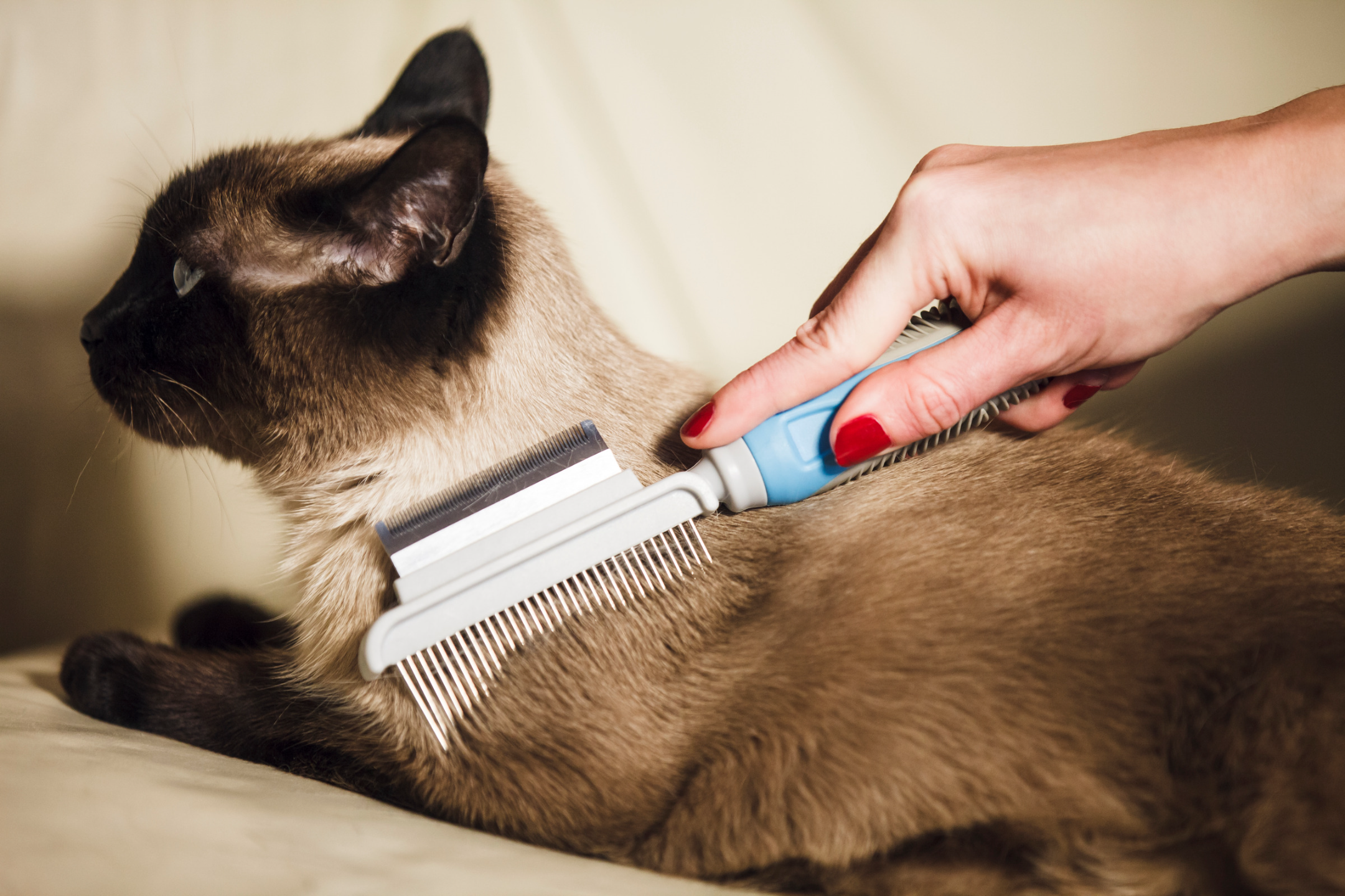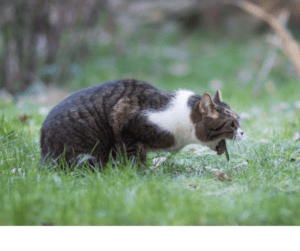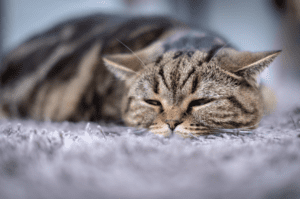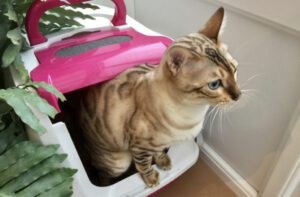Hairballs are common in cats. This condition, known as trichobezoar, occurs when hair becomes stuck in the cat’s throat, digestive tract, or pelvis. If left untreated, hairballs can cause serious health problems. Read about the common symptoms of hairballs in cats.
What Are Hairballs?
Cats love to groom themselves. However, as they do so, they can ingest pieces of hair that can get stuck in their digestive system. The hair pieces can accumulate over time and become large clumps blocking the cat’s digestive tract.
Despite the term, hairballs rarely form into a “ball” shape. Instead, they more commonly look like sausages – slender and cylindrical. More so, hairballs may contain other materials, such as food particles, fecal matter, urine, or bits of skin. The materials can clog up the cat’s gut, making it difficult for food and water to pass through. This can lead to complications like dehydration and malnutrition.
Cats typically try to remove the hairballs on their own by vomiting. However, when the clumps have become too large to pass through the digestive tract, they may need treatment at the veterinary clinic. In some cases, the veterinarian may be able to remove the hairballs without surgery. The veterinarian may recommend giving your cat a laxative or feeding it probiotics to promote healthy digestive habits. This may allow the clumps to pass through the digestive tract on their own. If these are still not enough, your veterinarian may recommend surgical intervention.
Cat Breeds More Prone To Hairballs
Some breeds are more prone to hairballs than others. These include long-haired cats like Norwegian Forest, Persians, Maine Coons, and Himalayans. However, short-haired breeds such as Munchkins and Siamese may also develop hairballs.
Other factors that may contribute to the development of hairballs include age, obesity, and digestive problems. For example, elderly cats are more likely to develop hairballs due to weakened immunity. Overweight cats and those with digestive order are more prone to hairballs, as their digestive system may be unable to process food efficiently. Finally, some diseases, like feline leukemia, can lead to the formation of hairballs.
How Do You Know If Your Cat Has Hairballs?
Your cat’s behavior is a good indication of whether he has hairballs. You will notice him retching and gagging as he tries to vomit the hairballs. He may also be highly lethargic or exhibit irritability when attempting to pass the hairballs. Other symptoms include:
- Lack of appetite
- Constipation
- Diarrhea
- Swollen abdomen
- Vomiting food or fluid
- Lack of bowel movements
You should consult a vet immediately if you notice any of these symptoms in your cat. In some cases, hairballs can be dangerous. They can cause a blockage of the intestines and lead to bowel obstruction. This condition can be fatal if not treated in time.
Diagnosing Hairballs in Cats
The vet will physically examine your cat and check for abdominal swelling to diagnose hairballs. They may also ask for the cat’s medical history and symptoms. They may also perform a fecal test on the cat to check for traces of the hairballs. Sometimes, the vet may also do an abdominal radiograph or ultrasound to see if the hairballs have blocked any of the intestines. If so, the vet will perform an endoscopy to inspect the blockage and remove the obstruction.
Preventing Hairballs in Cats

Although there is no way to prevent hairballs completely, you can take measures to reduce the risk of hairballs developing in your cat.
- Regular and proper grooming – Cats must be groomed regularly to keep their fur clean. Daily combing and brushing your cat will help you eliminate loose hair so your cat won’t lick and ingest it. If your cat doesn’t enjoy brushing, take them to the groomer for a haircut.
- Change your cat’s diet – You can help prevent hairballs by providing a balanced diet. Try to avoid feeding your cat foods that are high in carbohydrates or sugar. Instead, choose foods that contain protein and healthy fats. You may also add fiber-rich foods to your cat’s diet to improve digestion and prevent constipation.
- Administer a hairball product or laxative – Several hairball products or laxatives are available on the market that helps hairballs pass through the cat’s system faster. Follow the instructions on the packaging to ensure your cat is safe and has no side effects.
- Practice cat fold hygiene – Cats tend to groom themselves with their paws and try to ingest stray hairs stuck in their fur. This can lead to hairballs, so practicing cat fold hygiene is vital to ensure your cat is clean and safe. To do this, place a tissue or handkerchief on your cat’s forehead and press it gently against the fur in the area between their eyebrows and across the bridge of their nose to remove any stray hairs. Then wipe the rest of their coat with a hand towel to remove any additional stray hairs. Finally, wipe their ears and bottom with a damp washcloth to remove any other stray hairs. By doing this regularly, you’ll prevent hairballs from forming in your cat.
Takeaway
Occasional hairballs are normal in cats, so you don’t have to worry. However, you can take the abovementioned measures to prevent it and help your cat pass the hairballs easily. If your cat frequently vomits hairballs, bring them to the vet to determine if they have a medical condition that causes this.








